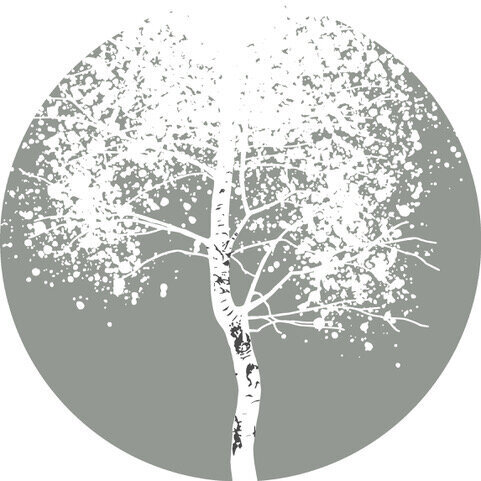Living Life in the Slow Lane (with Mindful Awareness)
/The moral of Aesop’s Fable The Tortoise and The Hare is “slow and steady wins the race.” The same is true of developing a Yoga and Mindfulness practice. Consistent effort and perseverance pay dividends.
At the time of writing, my students have just come to the end of 16 weeks of being beginners again. We went back to the basic poses but we also revisited each of the 7 Attitudinal Foundations of Mindfulness as follows:
Non-judging
Non-striving
Letting Go
Trust
Acceptance
Patience
Beginner’s Mind
You may believe that going back to basics would be tedious, but the value of this has been that we have had been able to relinquish negative habits and adopt more positive ones, be they physical or mental.
The attitude of Beginner’s Mind refers to the fact that at no moment in life can we have the same experience twice, so being a beginner again has its benefits, not least that one can regain a love of poses that when approached afresh, can change from being a nemesis to a friend.
Practicing Yoga at a slower pace, with mindful awareness of which attitude we have brought to our practice allows us to pause, assess each moment and cultivate positive habits that serve both body and mind far better than racing through a practice to fit in lots of asana.
To build strength, muscles need to be held under tension for 20 - 70 seconds. If we move slowly through each pose, we are not only achieving this but also enabling time to recognise the attitude with which we are practicing, feedback from the body and how we can utilise the breath to our advantage.
It takes repetition and consistency to alter our attitude towards life’s events. More commonly, we base the present on the past and inevitably either fail at seeing the positive or have expectations dashed.
In all my years of teaching, I have seen people pushing themselves in ways that do not serve them well. If we go through the attitudes one by one, looking at their opposites, maybe you will recognise something you do in your own practice.
Judging - This person gets frustrated that they struggle with a pose. They compare themselves to others. They tut when they cannot balance. They often do things their own way and do not listen. They feel shame.
Striving - Students force their body into submission. The tension results in poor posture, pain after the class and it risks injuries. Strivers insist on staying in a pose even if the way their body is positioned is causing harm.
Clinging - Sometimes people come to class with a desired outcome. They may find it difficult to let go of tension. They may catastophise and tend to have a strong negativity bias. They feel disappointed if their needs are not met.
Non-trusting - These people don’t believe they will ever be able to practice a pose. They may hold back. They might prefer instruction and adjustment over inner wisdom, intuition and faith.
Rejection - This could be the person who is resistant to their own feelings. They may find it difficult to comprehend instruction. They may be dissociated from their body.
Impatience - These are the ones who rush into a pose before instructions are given. They forget the importance of breath. They fidget in savasana. They are always ready for the next pose without having experienced the previous one.
Auto-Pilot - Busy minded people are often on auto-pilot. They forget what they’ve just been told. Their mind wanders. They move without thinking.
With time and persistence, these students change. They learn to let go, to listen and accept support so long as the will (the ego) is flexible.
You may be aware that you observe a number of these attitudes - that is because they are cyclical; each one leads to or feeds off the other. There are good psychological reasons for having cultivated these attitudinal habits but with consistent effort and practice, you will be able to adapt more positive attitudes instead and experience greater contentment and satisfaction both on and off the mat.
The benefit of living life in the slow lane is that it permits time to recognise when we are engaging in negative behaviours or habits. It doesn’t encourage constant analysis, but rather it affords us time to choose a different pathway that serves us, in the present moment to experience life with greater joy and awe. It allows us to be present and in so being, we tend to find greater contentment in all that we do. Of course it also leads to the ability to better regulate one’s nervous system too.
If we practice each of the positive attitudinal foundations of mindfulness, we see the world through a brighter, clearer lens. But the only way to do this, is with practice and as was stated at The Minded Institute, these are lessons for life not just for today! When we slip up, which we will, we simply go back to the beginning again.
Returning to the mat with a beginner’s mind allows us to experience only what we feel in the moment and not with any expectations of past experience. By slowing the breath and allowing this to be our guide, we slow down the movements of the body and so can attend to its needs. We can observe the behaviours of the mind, acknowledge it and either congratulate ourselves or choose another way.
Slowing down leads to a happier, healthier existence. It leads to better relationships. We tend to get more done by being deliberate and considered. From a Yoga perspective, slowing down helps us gain strength and improve flexibility. It improves mental clarity and bodily awareness.
Taking what we learn on the mat, into daily life strengthens the neural pathways that lead to being more mindful every day and therefore to contentment. Spend more time being.

